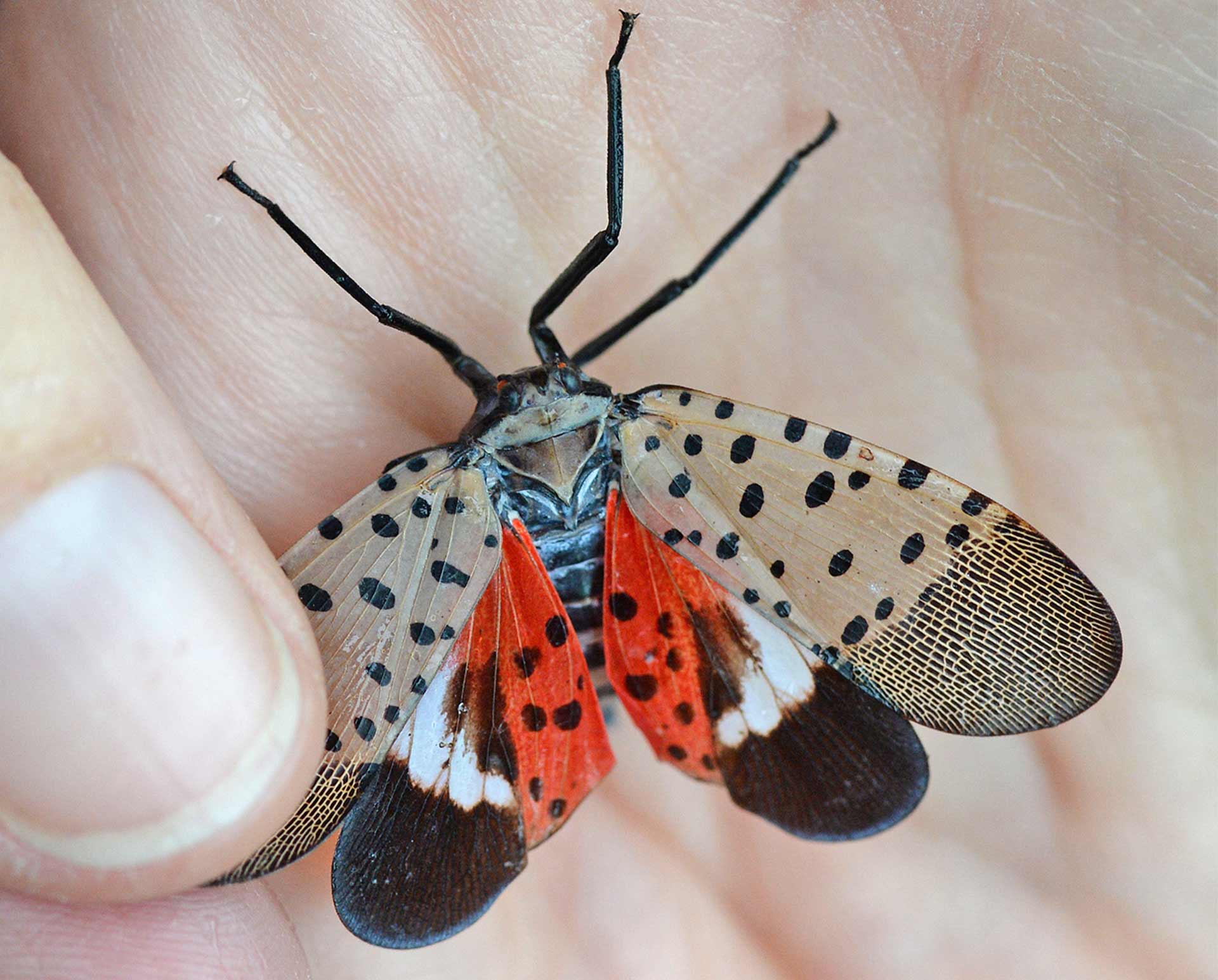- October 02, 2019
- By Chris Carroll
Colorful but destructive to a whole passel of desirable plants, spotted lanternflies are swarming and bumbling (because they don’t actually fly all that well) south from Pennsylvania.
Maryland’s northern neighbor has been combatting a plague of these invasive insects for about five years, prompting quarantines on the movement of products ranging from mulch to children’s toys to prevent the spread of the bugs and their eggs.
Now they appear to be making themselves at home in Maryland as well, with small populations spotted in Cecil County and Harford County in September, according to the Maryland Department of Agriculture. And judging from the burst of Twitter mentions and lively conversation on the lanternfly-killing app Squishr, people are abuzz with concern.
Maryland Today spoke to entomology Professor Mike Raupp, aka “The Bug Guy,” to find out why this is a big deal and what we can do about it.
Why do people seem especially alarmed by lanternflies?
For one thing, this is a very large, very colorful and frankly a drop-dead gorgeous-looking insect that is going to appear in vast numbers on plants—I'm talking about hundreds—and some people say that they actually see thousands of these things on a single plant. These are not ant- or aphid-size insects. These are insects as large or slightly larger than your thumbnail. They're going to line the bases of trees and be very noticeable. 
How damaging are these bugs?
This is going to be a very serious problem for grape growers, hop growers—affecting two of my favorite beverages—and growers of fruits like raspberries, apples and peaches. When these rascals feed, they squirt out prodigious amounts of a waste product called honeydew that is going to rain down on the fruit and on the leaves. You’re not going to be able to sell those grapes or use them in wine. That’s the economic part. Then there’s the part where this honeydew is going to rain down on your patio. It's going to be like Creedence Clearwater Revival crooned, and rain on a sunny day as these vast amounts of honeydew are excreted down on your picnic and the food on your table.
Where did the bugs come from?
They first showed up in Berks County, Pennsylvania in 2014, in a shipment of stone products from Asia. They next jumped over to Delaware in 2017, and in 2018 they were picked up in New Jersey and Virginia—active infestations. We had our first Maryland reports in 2018, and now we have two counties in Maryland, Harford and Cecil, where they are actively going to try to suppress those populations. The good news is that we’ve got good tools to control it, with certain insecticides that arborists pest management professionals and even homehowners have available.
How bad could the infestation get?
Basically, the rate of spread is now increasing. It’s not unusual for invasive species to get off to a slow start and then kind of pick up momentum. They've also been found as far north, in isolated cases, as New York, Connecticut and Massachusetts. We expect this with interstate transit of vehicles and items they transport including lawn furniture, plants and other items that they lay their eggs on.
What can people do to stop it?
The most important thing for Maryland citizens right now is keep an eye out. There are wonderful websites that show all of the life stages of the spotted lanternfly, and if they detect this insect, they need to call the Maryland Department of Agriculture or their University of Maryland Extension service immediately and report this so we can get in there, figure out if there's an active infestation, and then become proactive in terms of trying to suppress that population. One thing in particular that’s being recommended is that vineyards and fruit growers remove an invasive species of tree called tree of heaven, which is a key host in the life cycle of the spotted lanternfly.
What is science doing to stop it?
USDA scientists have already visited Asia and are in the process of vetting natural enemies from the native realm of the lanternfly that can be introduced to North America to reduce the lanternfly population.
Anything else that can be done?
Mother Nature is at it already, in much the same way we saw an initial spike in the brown marmorated stink bug populations back in the 2000s that basically has settled itself down. So we've got our fingers crossed that Mother Nature's hit squad of indigenous natural enemies is going to jump over and help put a beatdown on this new invasive pest. And the signs of this are already under way.
